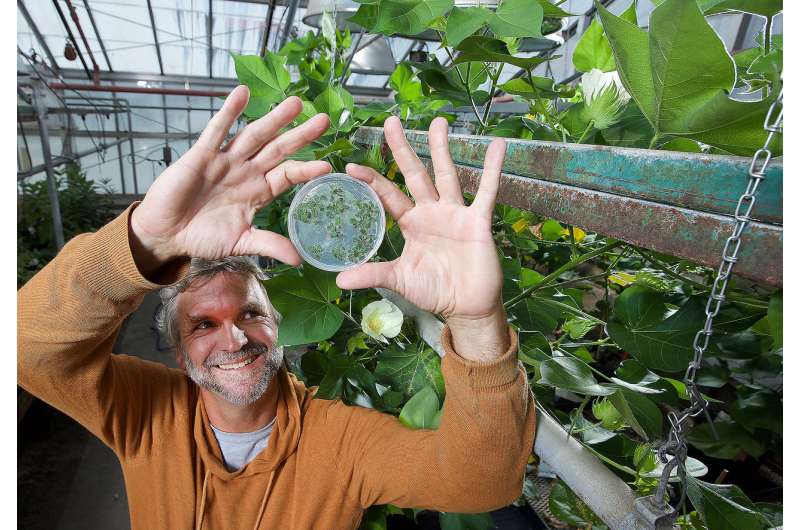Study finds key to plant growth control mechanism

A Purdue University study has mapped a complex series of pathways that control the shape of plant cells. The findings are an important step toward customizing how plants grow to suit particular agronomic needs and improving the quality of the cotton grown in the United States.
Cotton production is a $25 billion industry in the United States, but the types of cotton farmers can grow here is of lesser quality than premium Egyptian or Pima cottons, which have smaller fiber diameters. Daniel Szymanski, professor in the Department of Botany and Plant Pathology, analyzed how intracellular signaling networks pattern cell walls to generate particular cell shapes and sizes. This knowledge from the Arabidopsis model system can be used to generate cotton fiber cells with smaller diameter or increased strength.
In findings published in the journal Current Biology, Szymanski described how microtubules and actin, protein polymers that form the cytoskeletons of plant cells, are organized to specify the mechanical properties of cell walls that define cell shape.
Szymanski's group found that microtubules entrap a protein called SPIKE 1 within the apex of a cell where SPIKE 1 recruits additional protein machineries that cause actin filaments to form. Actin filament networks are then organized as roadways for long-distance intracellular transport and the regulated delivery of cell wall materials that are necessary for cell growth.
"SPIKE 1 is a master regulator in cells, a switch that when activated determines the time and location where actin networks are polymerized," Szymanski said.
The location and activity of SPIKE1 is important. Without it, growth is misregulated, leading to distorted cell shapes that do not taper properly. The SPIKE1 protein is one of a growing number of tools that could be used to program the size and shapes of economically important cells, including cotton fibers.
Szymanski said this new understanding will also likely play a broader role in designing plants that have different cell shapes and sizes.
"Cells are building blocks for tissues and organs, and they have the potential to influence key traits like leaf size," Szymanski said. "This work provides a knowledge base that will enable cell, tissue and organ engineering."
More information: Makoto Yanagisawa et al. Microtubule-Dependent Confinement of a Cell Signaling and Actin Polymerization Control Module Regulates Polarized Cell Growth, Current Biology (2018). DOI: 10.1016/j.cub.2018.05.076
Journal information: Current Biology
Provided by Purdue University





















